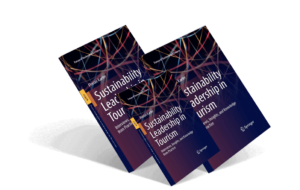
As the world slowly recovers from the pandemic, the tourism industry faces several challenges in pursuing sustainable practices. In this editorial, I explore the observations and opinions of experts on sustainable tourism challenges and ways to promote regenerative tourism.
Happy reading – please share and join our discussions on LinkedIn.
Regenerative Tourism
Regenerative tourism is all about restoring and rejuvenating the environment and the local communities that benefit from tourism. Marcus Cotton, a sustainable tourism expert, highlights the importance of driving even higher standards of regenerative tourism. The focus should be on promoting practices that benefit not only the tourism industry but also the environment and local communities.
Sustainability in Transportation and F&B Industry
Masaru Takayama observes that there is still a struggle to mainstream sustainability in transportation and the F&B industry. Collaboration between stakeholders is necessary to promote sustainable practices collectively. Destinations must convince tourism practitioners to pursue sustainable tourism by demonstrating the economic benefits and by investing in sustainable infrastructure.
China, Russia, and Sustainable Tourism
Before the pandemic and the war in Ukraine, China and Russia were major source markets for many destinations. However, sustainable tourism practices were evident in some parts of China and at a small scale in Russia. As these economies open up or remain isolated, it is important to consider the potential impact on global tourism and sustainable tourism practices. Sustainable tourism should be a priority for all destinations and businesses, regardless of their size or location.
COVID-19 and Beyond
COVID-19 has disrupted the tourism industry, forcing destinations and businesses to adapt to new practices. However, Richard Butler warns that true significant change in sustainable tourism practices may not happen without external forces or government intervention. Therefore, there is a need for a critical appraisal of existing policies and a focus on implementation rather than policy formulation. Gianna Moscardo observes that there is a need to address long-term structural elements in tourism, such as ventilation, circulation, spacing, scheduling, and biosecurity to reduce future transmission of diseases and manage major environmental threats.
Tourism and Climate Change
Gavin Bate believes that tourism should be front and center in climate change talks. Climate change poses a significant threat to the tourism industry, and sustainable tourism practices can mitigate its effects. Sustainable tourism should be an integral part of the global efforts to mitigate climate change.
Key Takeaways
As the tourism industry recovers, sustainability should be at the forefront of decision-making. Collaboration between stakeholders, investment in sustainable infrastructure, and a focus on regenerative tourism practices are necessary to promote sustainable tourism. Governments, businesses, and travelers must prioritize sustainable practices to ensure the long-term viability of the tourism industry.
At Sustainability-Leaders.com, we are committed to promoting sustainable tourism practices and facilitating a dialogue between stakeholders. Join us in our mission to make tourism sustainable – e.g. participating in our conversations on LinkedIn.
 Curious about sustainability leadership in tourism?
Curious about sustainability leadership in tourism?
You may want to check out the Sustainability Leaders United professional handbook on the topic, published by Springer last year. Includes essential know how and interview portraits with over 100 sustainable tourism leading thinkers and doers.











